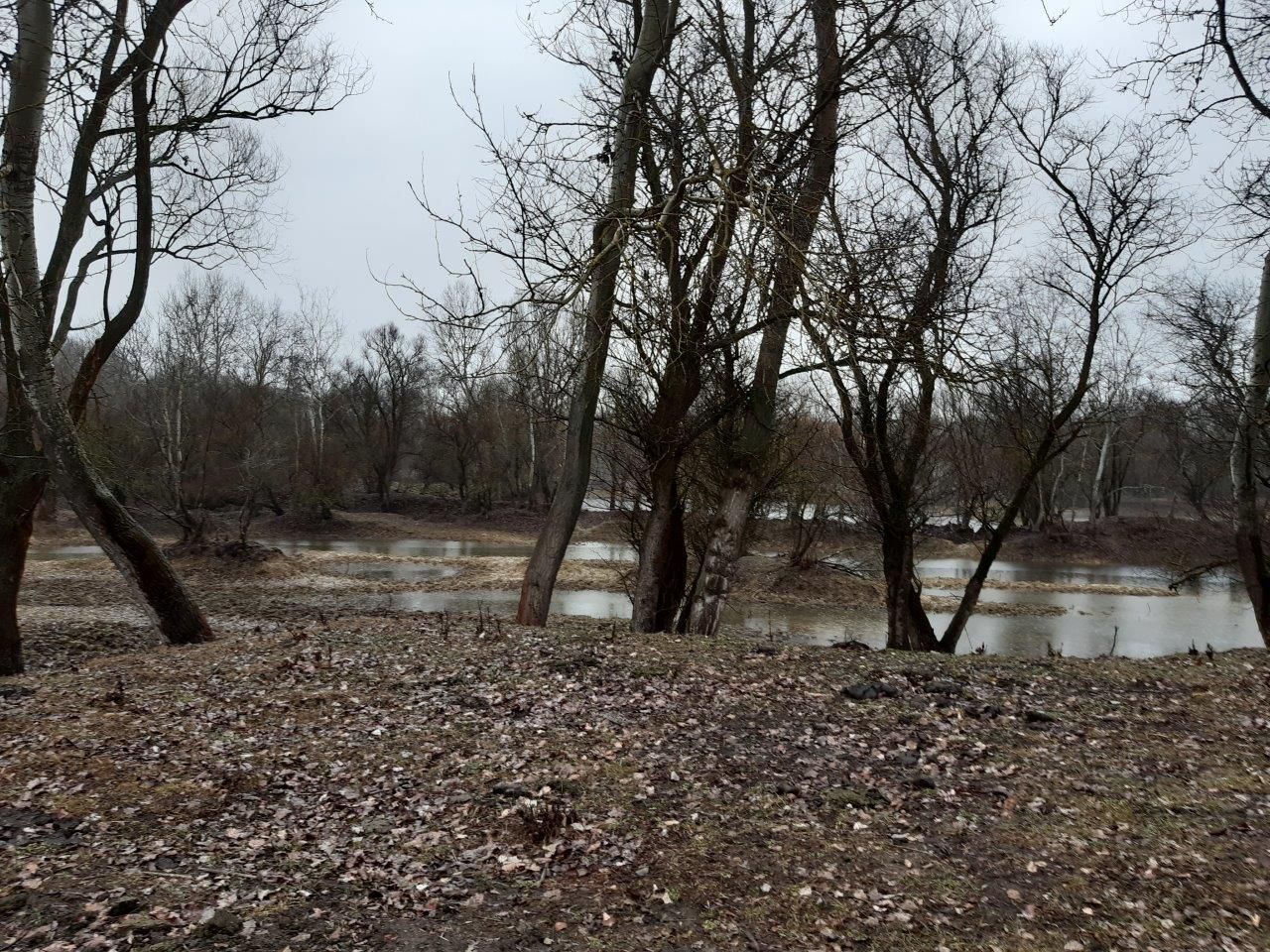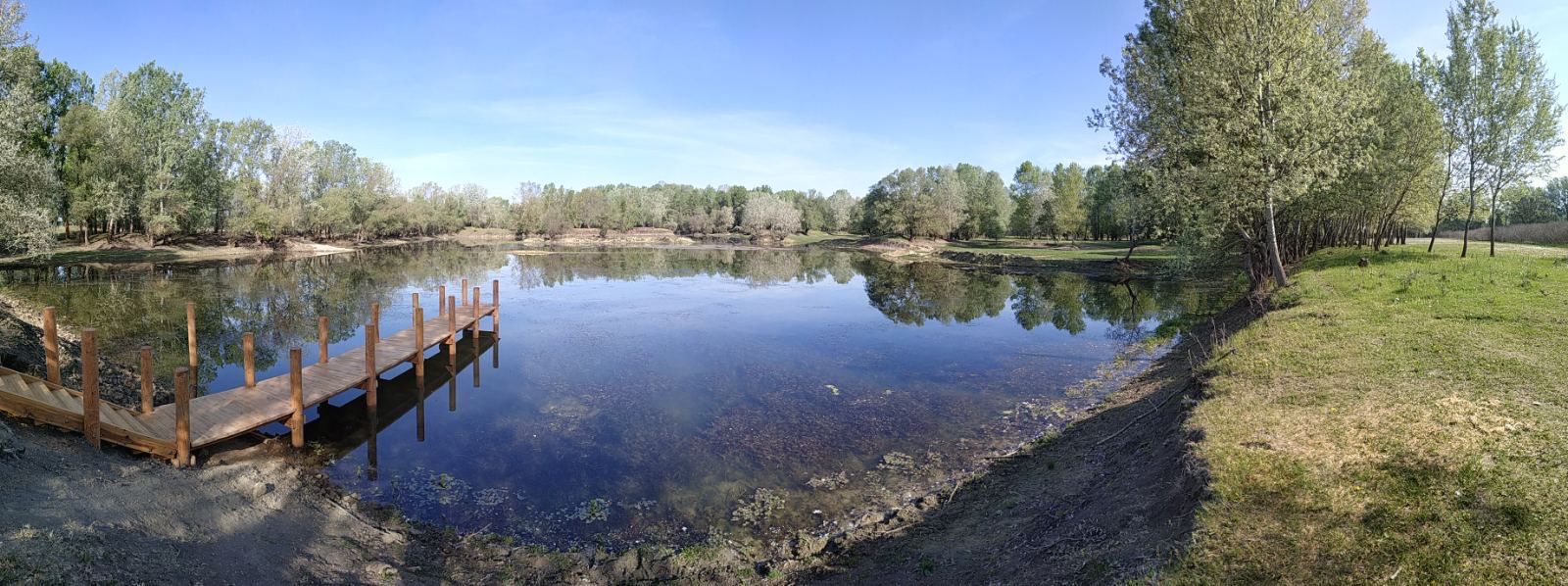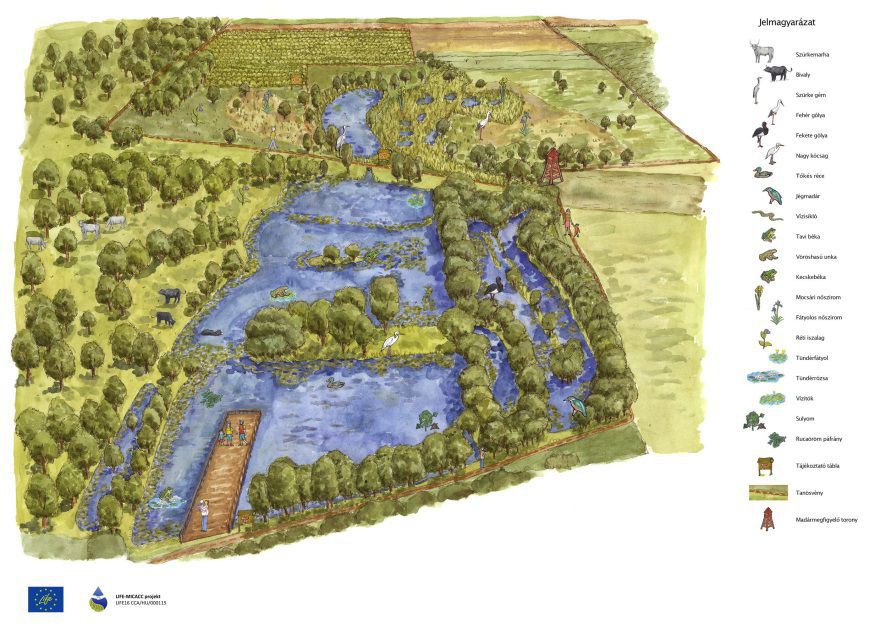LIFE-MICACC project
LIFE16 CCA/HU/000115
"Municipalities as integrators and coordinators
in adaptation to climate change"
LIFE-MICACC project
LIFE16 CCA/HU/000115
"Municipalities as integrators and coordinators
in adaptation to climate change"
Tiszatarján is located in Borsod-Abaúj-Zemplén county, in Mezőcsát province. The settlement is located on the banks of the Tisza, a quarter of its territory belongs to the floodplain of said river. The floodplain is extremely vulnerable to unpredictable, severe floods, persistent and increasingly frequent droughts and inland water. Floods cause crop damage and the proliferation of invasive plant species, and drought causes water shortages for the ecosystem, agriculture and the recreational sector, which greatly increases sensitivity.

Low water level in the Tiszatarján floodplain
In order to increase local bioenergy production, control invasive plant species, promote water retention, semi-natural grazing and ecoturism, small-scale natural water retention interventions will be implemented in the already mentioned floodplain and in the outdoor area covered with cubic pits. By creating interconnected, permanent open water surfaces, they provide a natural water supply for agriculture, wetland habitat for aquatic species and drinking space for buffaloes and Hungarian gray cattle in Tiszatarján.
Buffaloes and Hungarian gray cattle around the lake
This type of solution combines natural risk reduction and improved resilience with economic diversification of income sources. The innovative model is made economically sustainable by ecoturism and the use of biomass, which provides renewable energy. Biomass is produced using invasive plant species, which is used as fuel in public institutions in the municipality, and is supplied in small quantitites to a nearby power plant. They seek to prevent the return of invasive species by planting willow trees (which later also contribute to biomass production) and floodplain grazing.
 Current view of the lake after construction work (May 2020)
Current view of the lake after construction work (May 2020)
The construction works are progressing at a good pace, the local government sees the deadline of the end of June as sustainable, considering the current circumstances. The new wetland has been established and the construction works for the water retention structure have been completed.
The placed water retentions artefacts
The ridge separating the lakes has been cut through, and the steep slope has already been completed. As part of the project, a visitor trail will be built around the lake, where information boards and furniture suitable for outdoor recreation will also be placed. The pier belonging to the above-part of the study trail has already been built, however, the acquisition of the necessary elements (benches, boards) for the rest of the study trail is currently in progress.
The above-water part of the study trail and the cutting of the earth ridge

The planned extension of the Buffalo Lake in the Tiszatarján floodplain
(Created by Kinga Csaba, Csilla Ruzics)